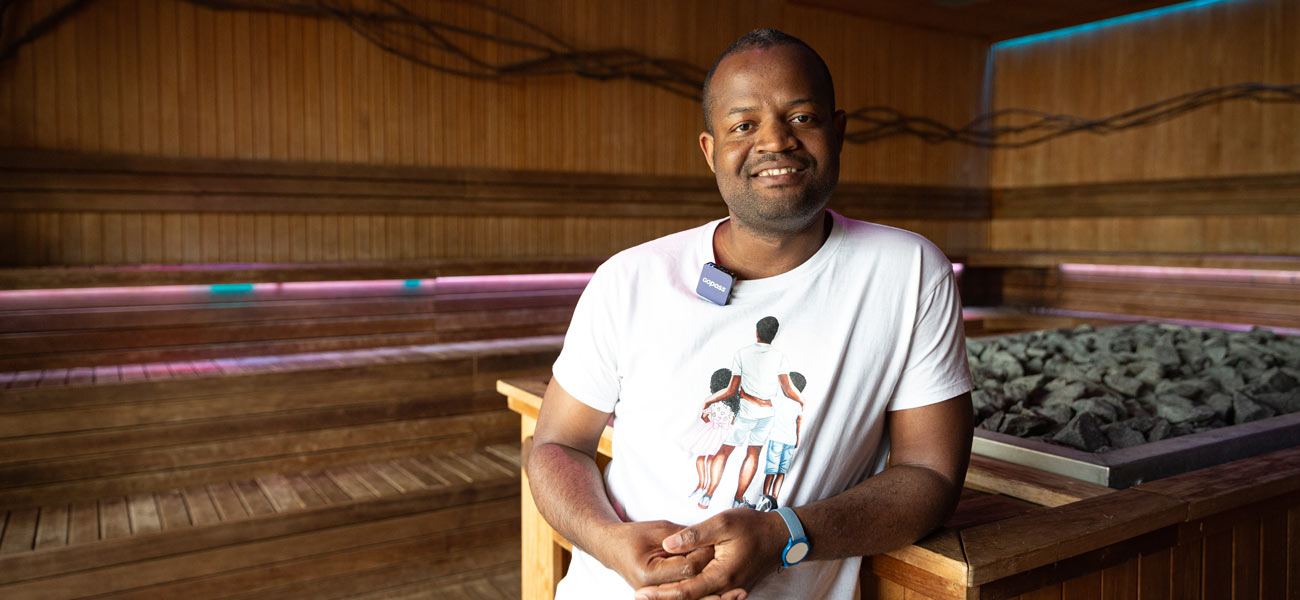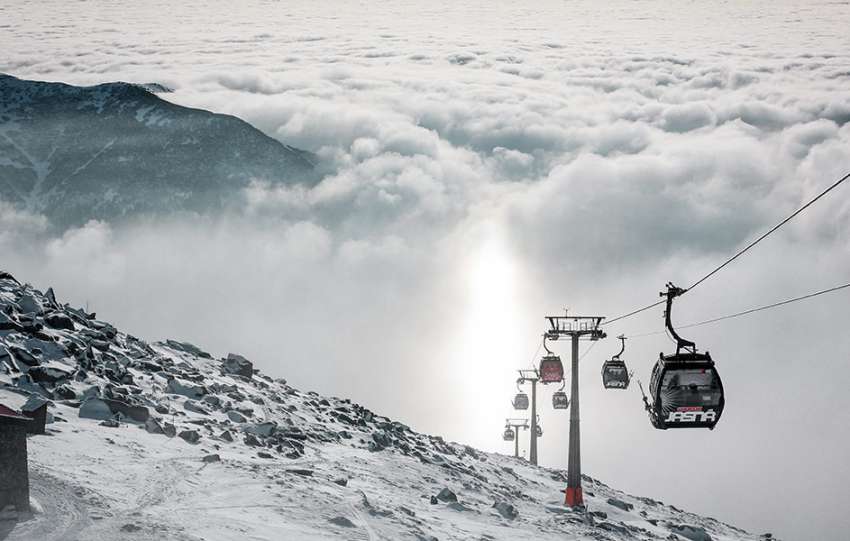Share This Article
To fully benefit from sauna sessions, it’s essential to follow the principles of proper sauna etiquette. This involves understanding how the sauna cycle should look like, knowing when to skip a sauna session and which type of sauna to use.
All of this and more will be discussed in our interview with Jean Colin Dora, the sauna master at the Bešeňová water park. Jean will explain the role of a sauna master and what a sauna ritual entails.
Jean, what does the work of a sauna master involve and what is required for someone to become a sauna master?
Sauna masters work closely with people, so communication skills are crucial. It’s beneficial to have training in this area. However, what truly defines a sauna master’s work is their expertise with herbs and aromas. They need to know which aromas can be combined and what is the appropriate amount to use during a sauna ritual, depending on the size of the sauna. If the aroma level is too low, clients won’t feel it and it won’t have the desired effect. And on the other hand, if it’s too high, clients might feel uncomfortable and leave. We also use aromas for specific sauna rituals such as stress reduction or inflammation relief. Therefore, education in this field is essential. Physical and mental strength is another aspect. Sauna masters need to withstand high temperatures because while dispersing warm air onto guests during rituals, they get in contact with it too.
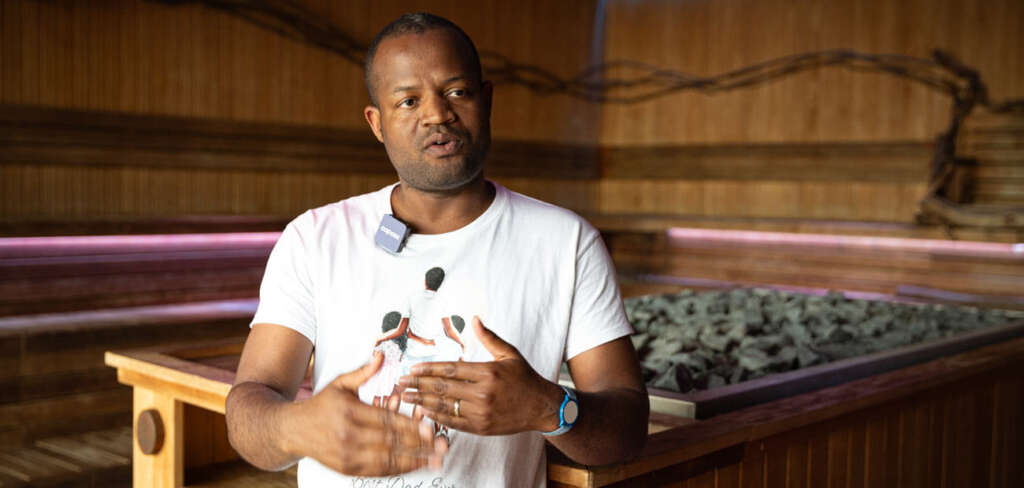
Could you explain what the rules of proper sauna bathing should look like?
When entering a sauna, guests receive a sheet (towel) to sit on. Therefore, the first rule is that the sauna area is a no-swimwear zone. This is for hygiene reasons and because harmful substances can evaporate from swimwear at high temperatures. In the changing room, guests remove all accessories, including watches and bracelets. My path from the changing room leads to the shower where I thoroughly rinse off before entering the sauna. For the first sauna session, I recommend starting with a lower temperature, gradually increasing it with each subsequent session. Many people say sauna sessions should last 15 minutes, but that’s not entirely true. A sauna session should last as long as my body tells me and as I feel comfortable. If it’s 5 minutes, that’s ok. If it’s 15, then it’s fine to stay for 15.
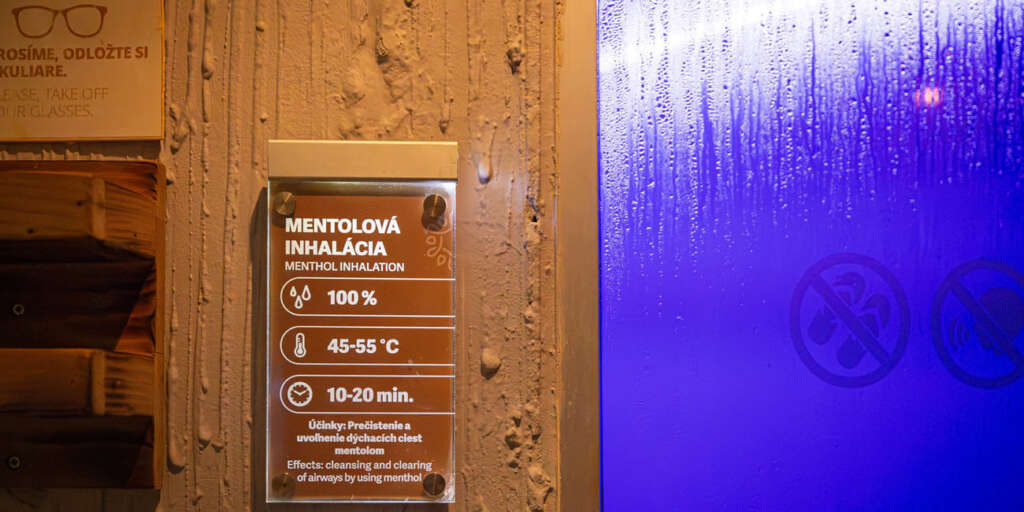
Jean, what does the cooling-down process after a sauna session look like and how long should it last?
First, it’s recommended to take a shower and then proceed to a cooling pool or a bucket. In Bešeňová, our cooling pools are around 10 to 15 degrees Celsius. To make it as effective as possible, I recommend cooling down for 30 seconds to 5 minutes. I am giving a range because not everyone can tolerate 5 minutes in icy water. After cooling down, it’s time to rest, but not to return to the sauna; instead, I relax in a tepidarium. Our bodies need at least 10 minutes, ideally 15, to rest before another sauna session. The entire cycle should be repeated three times.
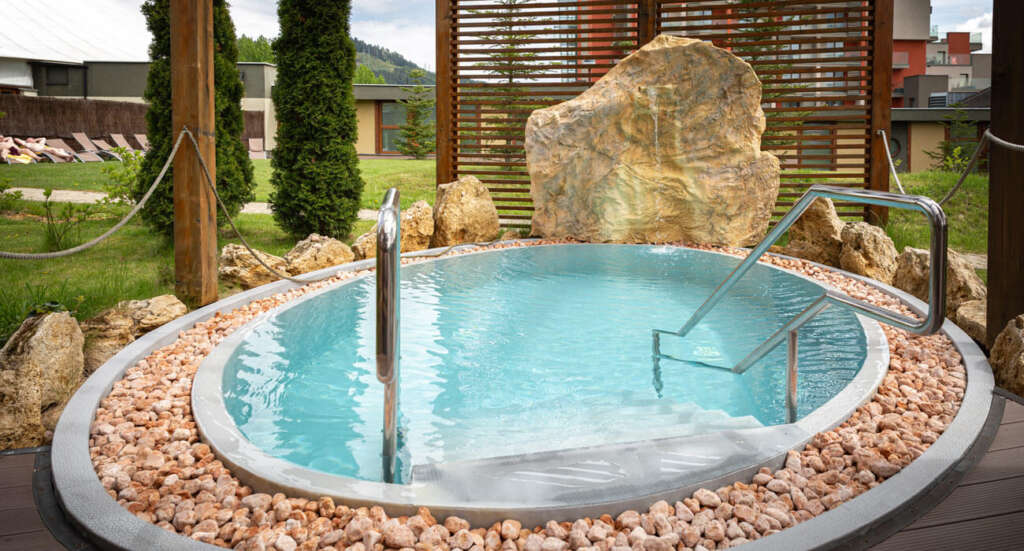
Can you tell us more about positive effects on our bodies?
People post sauna photos on Facebook or Instagram even though mobile phones are prohibited in saunas. The primary purpose of saunas isn’t for social media but for our health. Numerous studies have confirmed the positive effects of sauna bathing on our health. Sauna sessions can boost our immune system, cardiovascular health, and improve skin quality. That’s why we offer exfoliation treatments in the sauna world, which help remove dead skin cells and leave our skin feeling soft, like that of a child.
Jean, how often should we use a sauna for it to have a real effect?
It depends on whether someone is just starting with sauna sessions or has been doing it for a while. If you’re a beginner, sauna bathing twice a week is optimal. You come on one day, take a break the next and use a sauna again the following day. Then you can increase the number of sauna sessions to three or more. As I have mentioned before, it’s important to stay without swimwear in a sauna, using only a towel. The towel isn’t primarily for covering the body but to prevent direct contact between our bodies and the sauna’s wooden surfaces. So if I lie down in the sauna, I place the towel beneath me, under my hands too. During sauna sessions, our bodies release sweat and if it were to seep into the wood, it would be unhygienic.
We stand here by a door and there are several prohibition signs before entering the sauna. Why should they be observed?
In today’s world, people constantly have their mobile phones in their hands, but they don’t belong into saunas. Saunas are meant or relaxation and having a phone in hand disrupts that. Flip-flops or sandals should be left outside the sauna and guests should enter barefoot. The reason is the same as in the case of swimwear: at high temperatures, chemicals can evaporate from footwear, which we would then breathe in. Another rule is to be quiet. Many people go to the sauna to chat or meet friends, which has happened to me even during a ritual. But the sauna isn’t a place for conversation; nobody cares about others’ stories and people come primarily to relax. Therefore, I sit or lie quietly, rest, then shower, use the ice pool, relax in the tepidarium and repeat the same again. The last rule concerns beverages. They don’t belong in the sauna. It’s essential to stay hydrated during sauna sessions, but liquids should be consumed outside the sauna area. Glass cups can easily break and plastic ones can release chemicals into the air. As for alcohol, I would say it’s entirely inappropriate.
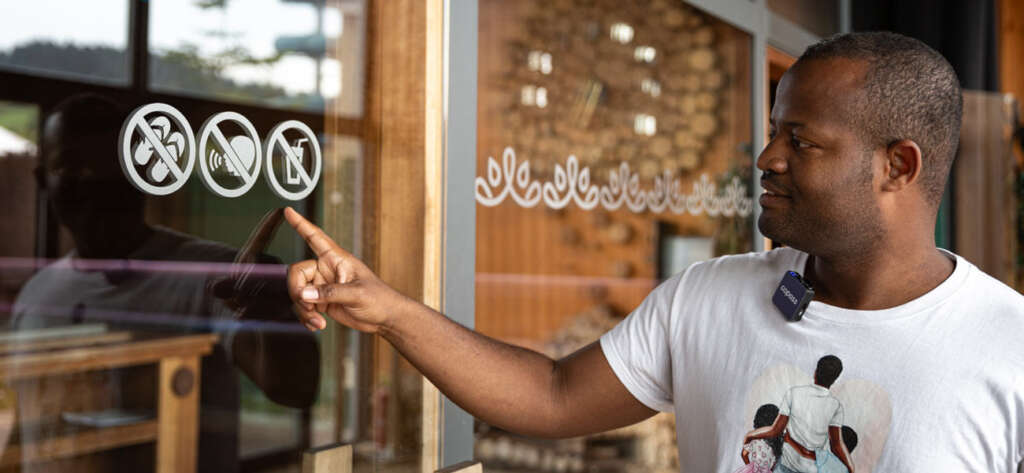
Jean, there are several types of saunas, each with its unique characteristics. Can you tell us about the differences?
We know many types of saunas. In a steam sauna, the temperature is lower, around 60 to 66 degrees Celsius, but the humidity is very high. Then there’s the biosauna, with temperatures ranging from 45 to 65 degrees Celsius, even lower. The infrared sauna also has lower temperatures but works differently. Lastly, there’s the traditional Finnish sauna, where the temperature reaches around 85 degrees Celsius. In this sauna, it’s recommended to lie down.
What about saunas and children or pregnant women and sauna bathing if someone is ill?
Let’s start with illness. If someone is sick, I don’t recommend going to the sauna. So that’s no-go. Many people believe it’s beneficial to use a sauna while ill, but it’s not. So if I’m sick, I focus on getting better before considering a sauna session. Regarding pregnant women, if a woman is pregnant and has never used a sauna before, I would definitely advise against it. However, if she has been sauna bathing before, I wouldn’t see an issue. But lower temperatures are a must, so not a 100-degree Finnish sauna. Also, sauna rituals are not recommended. As for children, we have a children’s sauna ritual, but it’s very similar to the guidelines for pregnant women. This means I recommend a maximum of a 50-degree sauna for children. It’s also essential to explain to children how to sauna bath correctly, including breathing through the nose rather than the mouth. So yes, both pregnant women and children can sauna, but under certain conditions.
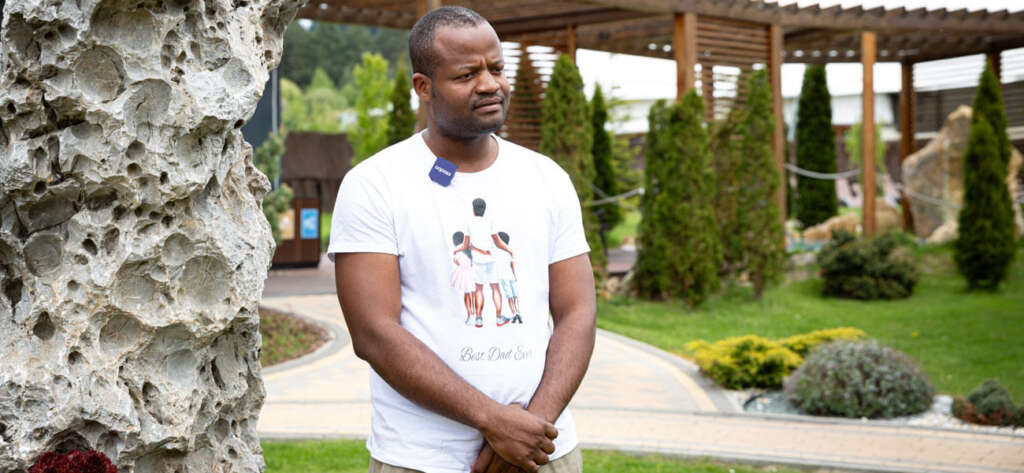
What’s the difference between a regular sauna session and being part of a sauna ritual?
Let’s start from the beginning. I enter the sauna and ventilate it. After 10 minutes, I allow people to enter. First, I ask if anyone has allergies to any aromas I’ll be using during the ritual. If so, that person should not participate. The entire ritual consists of three parts. In the first part, I use a towel and gradually increase the temperature while adding aromas. The second round increases the temperature even further, and in the third, it’s like being in an oven. Participating in an entire sauna ritual for 15 minutes is equivalent to completing five standard sauna cycles. Of course, sauna masters also perform various towel tricks, but those are merely for effect. It looks nice but doesn’t have any real impact.
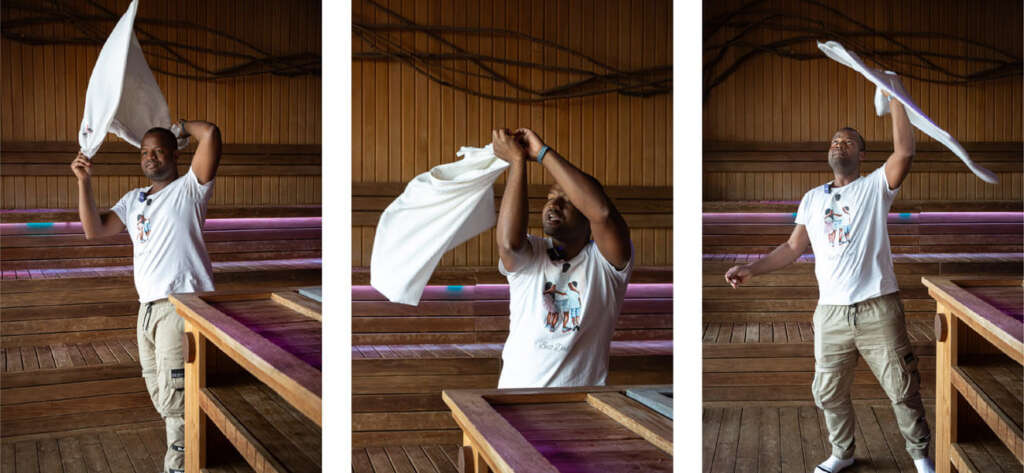
Thank you very much, Jean, for taking the time to introduce us to this magical world of sauna bathing, which not only has beneficial health effects on the body but also on the mind. Sauna worlds, whether in the Bešeňová water park or in Tatralandia, offer a wide range of saunas and relaxation elements. Hot tubs, heated benches, indoor and outdoor tepidariums – there’s no need to hesitate, just choose what you like.
This article has been created in cooperation with MTHIKER.sk.
